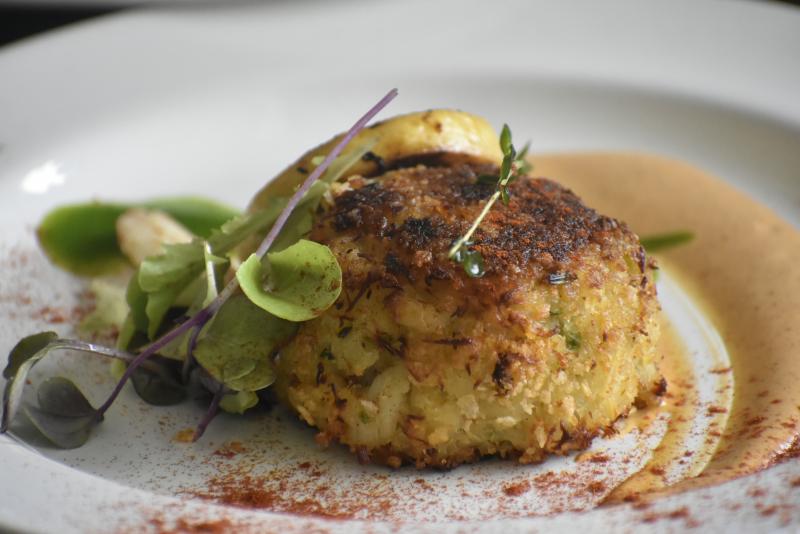
My sister Pat is five years older than me. When she was in the 10th grade, I was in the fifth grade. I distinctly remember this time because of my sister’s determination to win a cooking contest in her home economics class.
Pat’s mission was to create a winning tuna casserole. The recipe required a considerable amount of tweaking, which meant that she prepared this casserole daily for what seemed to be an eternity. My parents were products of the Great Depression and were loath to throwing out any “good” food. So for a while, a couple of weeks at least, we had tuna casserole every night for dinner.
This scarred me for life. To this day, I can’t look at a tuna casserole without cringing. I convinced myself that I hated tuna. I thought that all tuna came in a can and that the flavor of all tuna had to be hidden behind massive quantities of mayonnaise, pickles and onions. God forbid if you would mix it with macaroni and Campbell’s Cream of Mushroom soup.
I was out of college before I was introduced to fresh ahi tuna. I was at a dinner party and the host, a really good chef, had prepared yellow-fin tuna three ways. First he prepared a poke bowl. Next he seared it, coated with black pepper and sesame seeds. Lastly he poached it in olive oil and served it with roasted carrots.
If I had known tuna was on the menu, I would have begged off. I am so glad I didn’t. This experience made up for all the bad memories I had growing up and tuna has become a staple for me.
It is surprising how many people I talk to that have never tried fresh tuna, much less tried to cook it at home. I hope this column changes that for you.
Tuna are open ocean fish and are aggressive predators. While most fish are cold-blooded, yellow-fin tuna have a unique circulatory system that allows their body temperature to be higher than the surrounding water. This gives them a big edge when hunting because they are not as sluggish as their prey. This circulatory system also accounts for their red flesh. I thought you might like that little bit of trivia to impress your friends the next time you serve tuna.
The best tuna is the freshest tuna. This is especially true if you plan on eating it raw. From time to time you can find sushi grade tuna in the grocery store. When you find it, snatch it up. There are many online stores that offer sushi or sashimi grade tuna. If you are buying tuna at the grocery store or fish market, try to stay away from those pieces that have white streaks running through them. The white streaks are connective tissue and are very chewy.
Fresh tuna can be prepared in many ways. The best tuna can be prepared and eaten raw with maybe a quick marinade. While it’s OK to freeze most fish, when you are making poke bowls use fresh, never frozen, tuna. The ice crystals, created by freezing, change the texture of the flesh. A recipe for an easy poke bowl is included.
Tuna can be seared. When seared it is very important to use very high heat and use a cooking oil that has a very high smoking point like canola, avocado, or grapeseed oil. Sear for only about 20 to 30 seconds per side.
The tuna should be very rare and have a cool to room temperature center. If tuna is seared too long it can develop an off taste and texture.
Almost 20 years ago I introduced Louise to seared tuna. It did not take her long to know how she liked it. I almost fell over when she sent back her tuna at a very nice Austin restaurant because she felt it was over cooked. She was right.
Try mixing two tablespoons of coarsely ground black pepper with two tablespoons of raw sesame seeds. Press the fresh tuna into this mixture and sear away. That’s all there is to it.
Sometimes I will do a quick marinade of soy sauce, fresh ginger, toasted sesame oil, garlic and olive oil. It should only marinate for 30 minutes or so. After the tuna has marinated, dry it off and dredge it in the pepper/sesame seed mixture.
If the tuna is not dry it will steam instead of sear. You don’t want that.
If raw or rare tuna is a little out of your comfort zone, you might try poaching your tuna in olive oil. Bring oil up to a bare simmer and slide in your tuna.
Ideally the tuna will be covered in the warm oil but if not simply turn the tuna over about half way through the cooking process. This will only take about 10 minutes.
I must say that the inspiration for this column came from my friends Trey Ruschhaupt and Jack Fletcher.
They went offshore and caught some wonderful tuna. Thankfully they shared some with me. I love it when they do that.
July 29, 2020 at 03:00AM
https://ift.tt/2EtxDbw
How I learned to see fresh tuna in a new light - Victoria Advocate
https://ift.tt/2NKNaVQ
Tuna

No comments:
Post a Comment